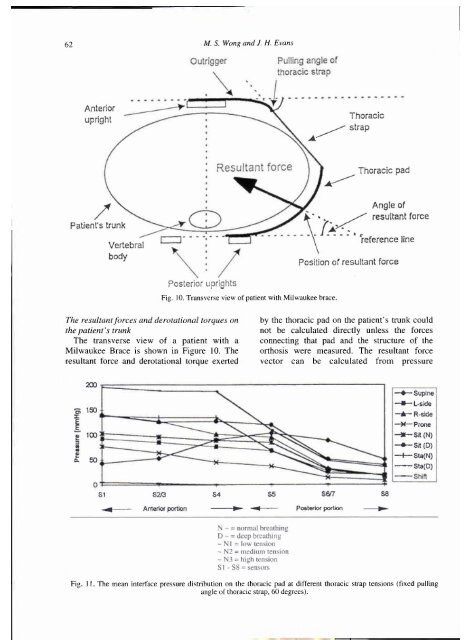Biomechanical evaluation of the Milwaukee brace
Biomechanical evaluation of the Milwaukee brace
Biomechanical evaluation of the Milwaukee brace
You also want an ePaper? Increase the reach of your titles
YUMPU automatically turns print PDFs into web optimized ePapers that Google loves.
62 M. S. Wong and J. H. Evans<br />
Fig. 10. Transverse view <strong>of</strong> patient with <strong>Milwaukee</strong> <strong>brace</strong>.<br />
The resultant forces and derotational torques on<br />
<strong>the</strong> patient's trunk<br />
The transverse view <strong>of</strong> a patient with a<br />
<strong>Milwaukee</strong> Brace is shown in Figure 10. The<br />
resultant force and derotational torque exerted<br />
by <strong>the</strong> thoracic pad on <strong>the</strong> patient's trunk could<br />
not be calculated directly unless <strong>the</strong> forces<br />
connecting that pad and <strong>the</strong> structure <strong>of</strong> <strong>the</strong><br />
orthosis were measured. The resultant force<br />
vector can be calculated from pressure<br />
Fig. 11. The mean interface pressure distribution on <strong>the</strong> thoracic pad at different thoracic strap tensions (fixed pulling<br />
angle <strong>of</strong> thoracic strap, 60 degrees).
















